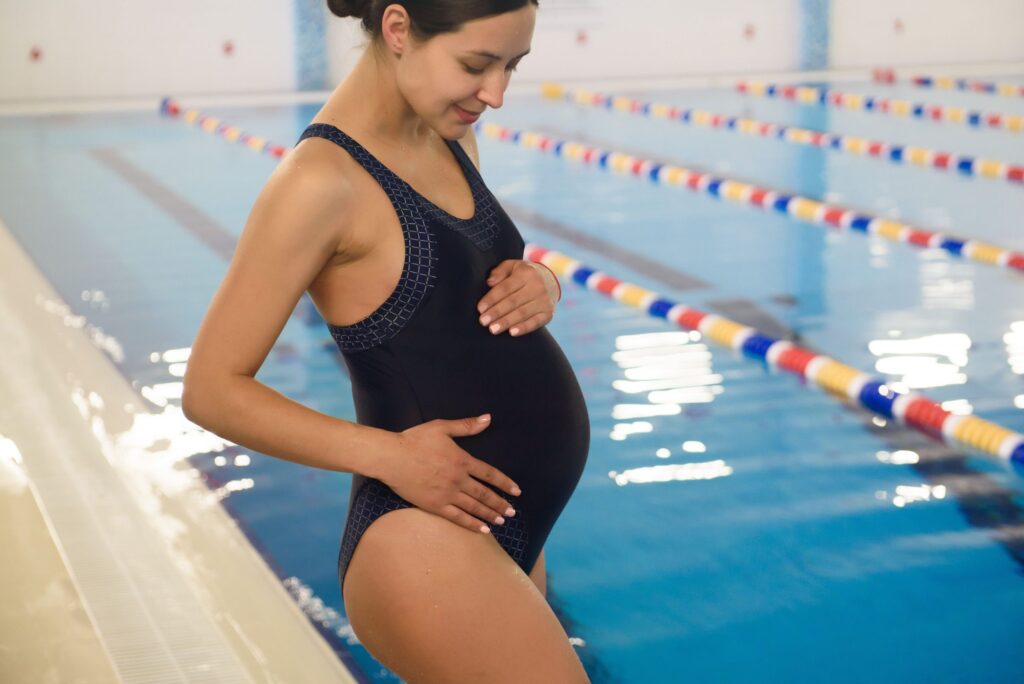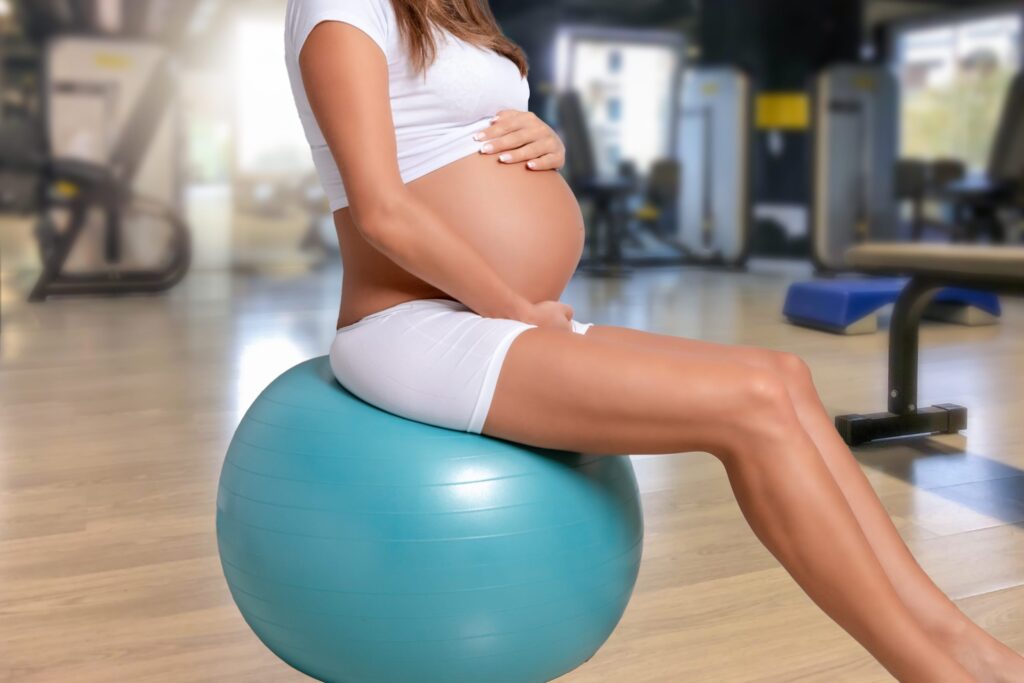
Let’s Turn That Breech Baby!

By Katie Hogue, PT, DPT, Aquacare – Berlin
Many women experience a breech baby during pregnancy. However, there is good news. There are several movements you can try to turn that breech baby and prepare for delivery. These movements use gravity and help relax your pelvic muscles and uterus.
A pregnancy and postpartum physical therapy specialist can help guide you through these movements.
Positioning is Important
For many breech babies, you can position yourself and let gravity do some of the work.
Try the breech tilt:
- Lie on your back and elevate your hips between 9 and 12 inches above your head. The easiest way is simply to lie on the ground (bum/feet facing the couch) and prop your hips up with pillows and your feet (on couch) are at the raised end.
- Three times a day for 10 to 15 minutes each time, on an empty stomach, and during times when the baby is active.
- Try to relax & breathe deeply as you perform the exercise
- Avoid tensing the abdominal muscles.
Next, consider getting on the floor on all fours to gradually entice the baby to flip.
- Come to the floor or bed on your knees and rest your forearms on the ground. Stick your butt into the air and tuck your chin. This allows the lower part of the uterus to expand, making room for the baby’s head.
- Try this two times a day for 5-15 minutes.
- Try to do it on an empty stomach, otherwise, you might feel slightly ill afterward.
- If you can feel the baby’s position, it may be possible to help the turning process along. While leaning on one elbow, use the opposite hand to exert gentle upward pressure on the baby’s rear end, which is located just above your pubic bone.
- A second option is to gently rock back and forth on your forearms and knees. You also can make circles with your pelvis to promote activity.
- The woman is at risk of a stroke or has a history of high blood pressure which warrants medical supervision
The Forward-Leaning Inversion
-
-
- Kneel on the edge of a couch. Kneel high to see what it feels like in your body.
- Hold the edge of the couch, bed, or other surface you are kneeling on.
- Carefully lower yourself to your hands on the floor and then lower yourself more to rest on your forearms. Keep your elbows out and hands close. Use a stool if you’d like, to help you walk your hands down.
- Do your best to keep your chin tucked. Don’t rest your head on the floor. Your neck may need a little movement. Straighten your shoulders to make room for your head.
- Your knees should be close to the edge, and your bottom up high. You can tilt or sway your hips if you’d like, or gently, slowly roll your spine.
- Take three breaths. Loosen your belly, but keep your shoulders strong. Tuck your chin and keep your neck long.
- Come back up on your hands, then lift yourself up to a high kneeling position again using a stool, a block, or an assistant. Take two breaths here, then sit on your heels.
- Swing your feet out from under you. Keep your feet together to prevent a pull on your pubic bone and protect your pelvic stability.
- After leaning forward on your elbows, come all the way back up to a high-kneeling position. Take 2 breaths and then sit on your heels for one more breath. That way you let your ligaments settle into a more symmetrical location while you catch your breath.
- One to two times for 30-45 seconds (roughly three breaths)
-
Swimming can help
Spending time in a swimming pool and doing crouches/flips in the pool can help a baby turn into the vertex position on his or her own.
- Try the following pool exercises with a spotter nearby: Crouch on the bottom of the pool in deep water, and then push off and reach your hands up as you break the surface of the water.
- Just swimming around the pool can encourage the baby to move (and feels really good during the final weeks of pregnancy). The breaststroke is thought to be particularly effective for this.
- If you feel comfortable! Do front and back flips in deep water. This will relax your muscles and make it easier for the baby to roll over on his or her own.
Only try these exercises if you are healthy enough for physical activity. Talk to your healthcare provider or your physical therapy team before trying exercises, especially if you have been told to limit activity or are on bed rest.
To register for Aquacare’s 4-week prenatal class, go to www.aquacarephysicaltherapy.com/upcoming-events or call Aquacare – Berlin at 443-513-3910.
Schedule your appointment or free consultation today.
Katie Hogue PT, DPT, is Clinical Director of Aquacare – Berlin. A native of Ocean City, she earned her bachelor’s degree in Exercise Science at Towson University. She then completed her Doctorate in Physical Therapy at Howard University. She has been practicing for more than three years. At Aquacare, Katie specializes in pelvic floor therapy, receiving her training from the Herman and Wallace Pelvic Rehabilitation Institute. Katie treats bowel and bladder dysfunction, pregnancy/postpartum, and pelvic pain diagnoses for all genders. In her free time, Katie enjoys spending time outside with her family.













